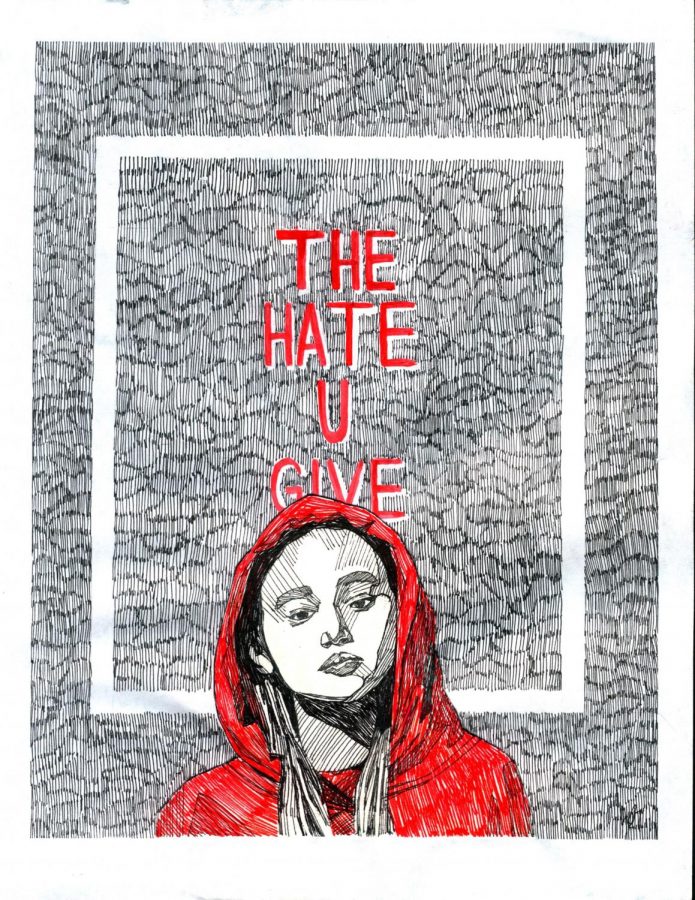“The Hate U Give” Stands Out
Film’s Importance Makes Up for Flaws
November 29, 2018
Falcon Rating: 4/5
The much-anticipated adaptation of Angie Thomas’ The Hate U Give has finally arrived. Released on October 19th, this film provoked feelings and emotions that I know a lot of black people (myself included) have been harboring. It tells the story of Starr Carter (Amandla Stenberg), who is caught in the middle of a harrowing police brutality case after leaving a party with her childhood friend, Khalil (Algee Smith). When they are stopped by police, Khalil is asked to exit the vehicle, and he is then shot by the officer. This act serves as the catalyst for the rest of the film.
From the very first scene, I was instantly put on edge. It starts with “the talk,” a conversation black and brown families have had for generations: the do’s and don’ts when dealing with police.
I connected to this scene immediately as someone who has had that same talk with my parents. The fear that envelops the black community when it comes to police is the centerpiece for the entire film. Throughout, we are constantly reminded of the looming peril that people of color face every day.
Another very important plot point in the film is Starr’s identity search. When she is at home, she is fly, vibrant and comfortable. However, when she attends her private school in an affluent white suburb, she is “Starr Version Two.” This Starr is reserved, picking her language carefully to avoid sounding “ghetto.” This side of her is more likely to hold her tongue than to speak up for herself, in an effort not to sound “ratchet” or play to the trope that all black girls are loud and belligerent. This struggle to find herself is something that is common among black teenagers.
The fear of being “too black” comes from the idea that to be black is to be inferior. So, as black people, we often attempt to assimilate, putting on a mask that makes us more “formidable” to our white counterparts. If anyone has ever been told that they “speak like a white person” (because I have), that comes from the nonsense stereotype that only white people know how to speak proper English. However, in her struggle, Starr also serves as a testament that black is beautiful and that we don’t ever have to try to change ourselves to appeal to anyone.
While incredibly powerful, this film was not without its drawbacks. Perhaps my biggest issue with this film was decided before we saw a single scene. In the book (and on the cover), Starr is portrayed as dark-skinned. Yet, in the film, Starr is light-skinned.
This plays directly into the issue of colorism in today’s Hollywood and society in general. This is not to say that Amandla Stenberg didn’t do a good job, but I do not think it was fair to cast a light-skinned girl in place of the dark-skinned main character that Starr was supposed to be.
This film is by no means perfect. It has its flaws like any other. However, what it lacks in some areas, it more than makes up for in the emotional motor that touches the hearts and minds of many people. As impactful as the book is, this movie elevated the effect because it gave us a visual of what we have seen play out in our country for years.
This movie should serve as a wake-up call that we still have very far to go in reaching a “post-racial” society. It should remind white America that black lives matter and that the racist and discriminatory treatment against us must end.
This piece also appears in our November 2018 print edition.









